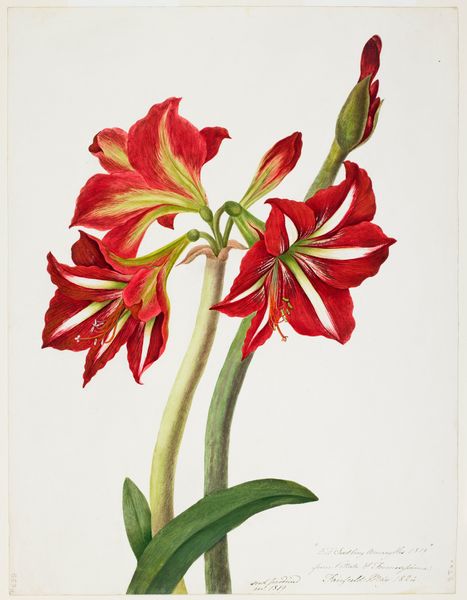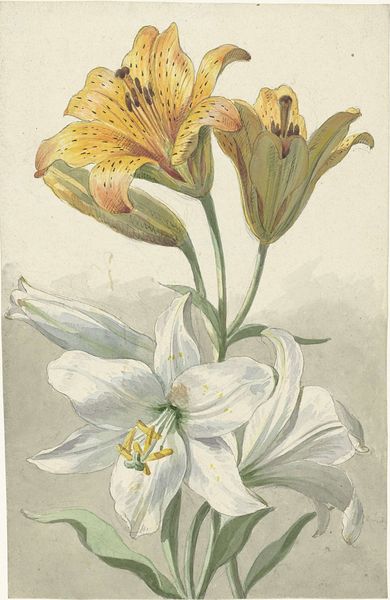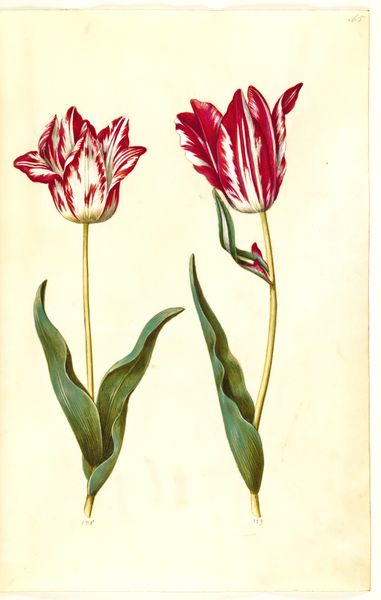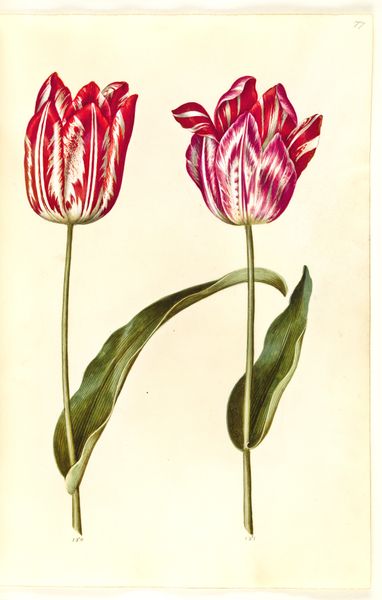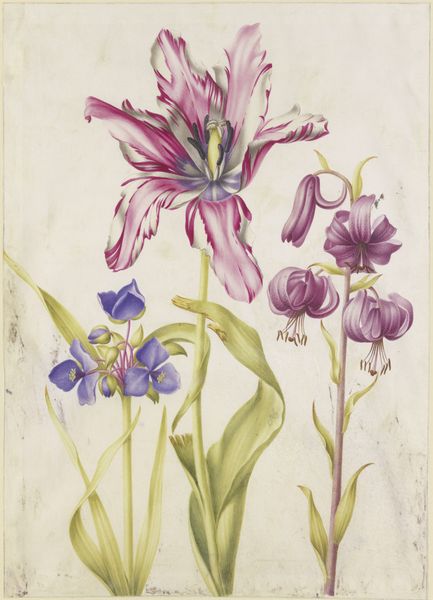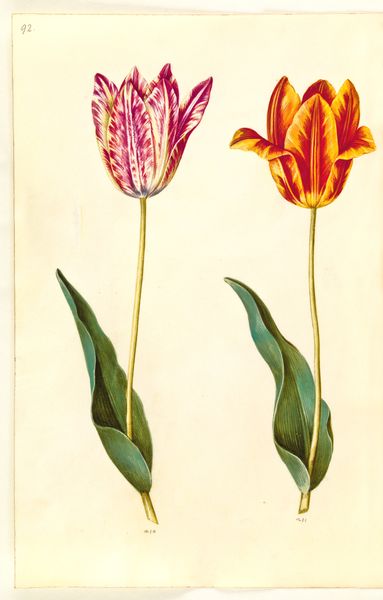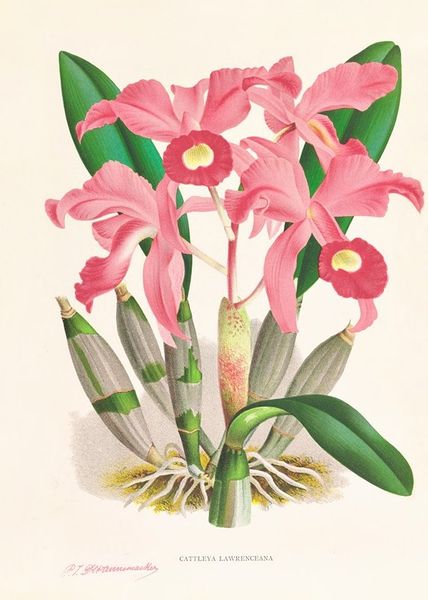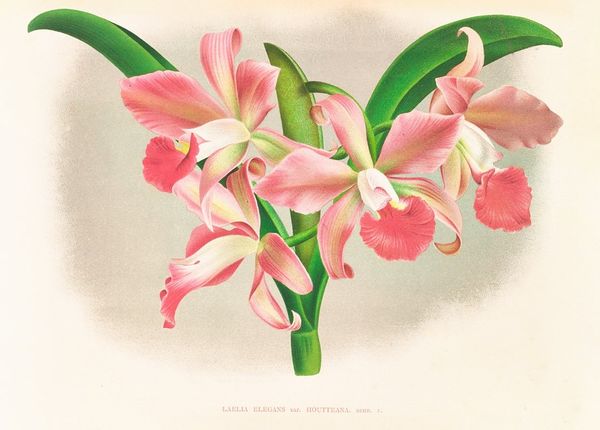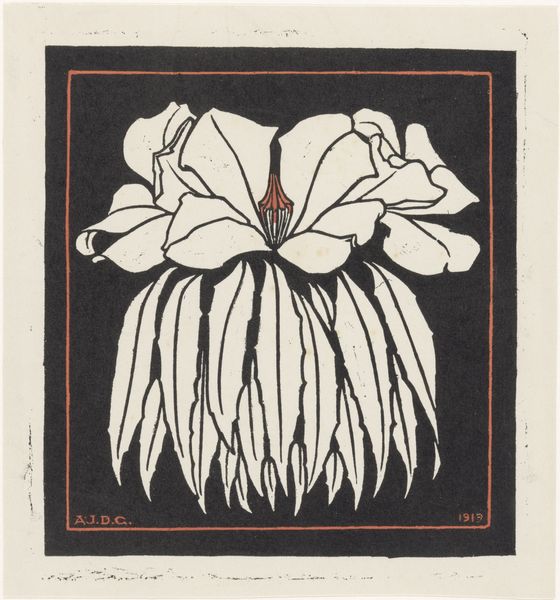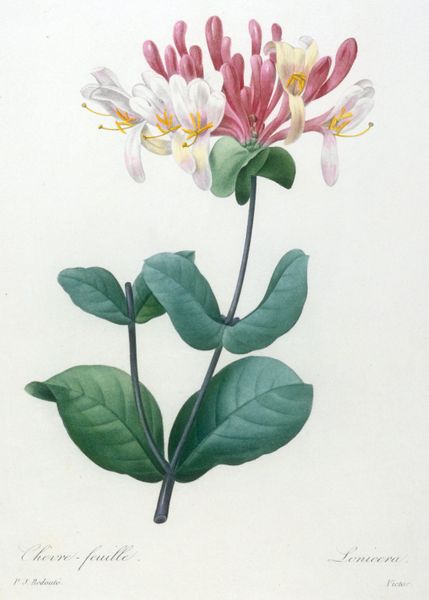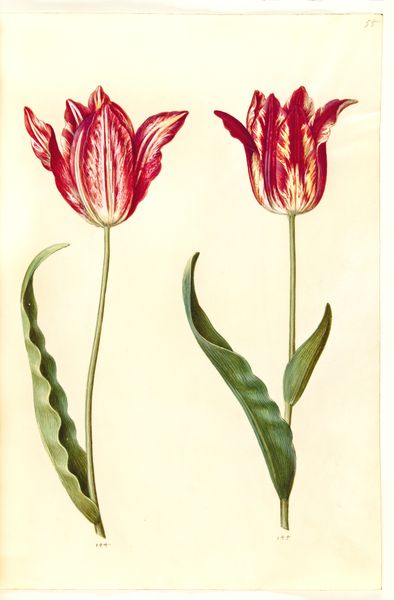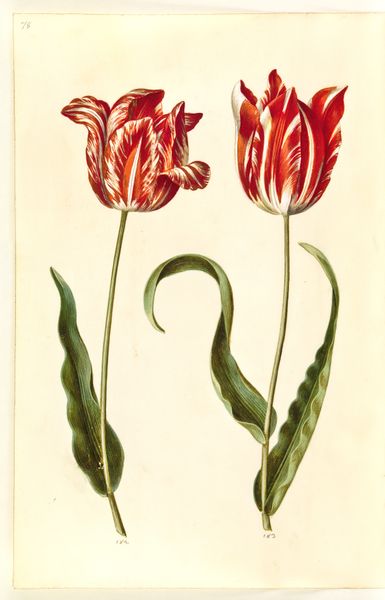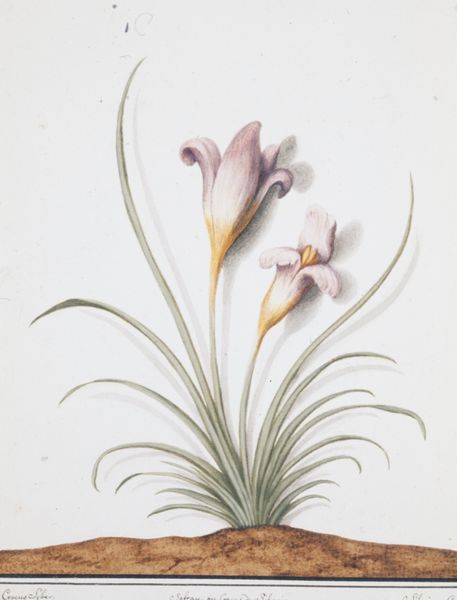
print, watercolor
# print
#
watercolor
#
naive art
#
watercolour illustration
#
watercolor
Dimensions: 18 1/4 × 23 in. (46.36 × 58.42 cm) (plate)30 3/8 × 38 1/2 × 1 5/8 in. (77.15 × 97.79 × 4.13 cm) (outer frame)
Copyright: Public Domain
Priscilla Susan Bury captured this Giant Spider Lily with watercolor and graphite around the early 19th century. The flower bursts forth, its white and red petals unfurling like ribbons, a stark contrast to the deep green leaves—a composition echoing the dynamism of nature itself. The lily, across millennia, has been laden with symbolism. In ancient Crete, lilies adorned frescoes, emblems of purity and regal grace. In Christian iconography, the Madonna is often depicted with lilies, signifying her virginity and divine role. But here, the Crinum augustum, or Spider Lily, introduces a twist. Its spider-like tendrils evoke both beauty and a hint of danger. The lily's recurring presence across cultures suggests a collective human fascination with its form, a primal attraction to its delicate yet assertive presence. Its symbolic journey, from Minoan palaces to Christian altars and now a botanical study, reveals the enduring power of images to adapt and reflect our evolving understanding of the world.
Comments
minneapolisinstituteofart almost 2 years ago
⋮
Botanical illustrators working in the fifteenth and sixteenth centuries devoted themselves to the medicinal qualities of plants and sought to render plant structure and function as precisely as they could. Later, European explorers brought specimens back from exotic locales, and artists carefully reproduced them for an audience fascinated by new discoveries. By the eighteenth and nineteenth centuries, artists had shifted their emphasis from scientific illustration to the innate beauty of the plant or flower. The Minneapolis Institute of Arts is fortunate to possess an impressive collection of more than 2,000 botanical prints and drawings.
Join the conversation
Join millions of artists and users on Artera today and experience the ultimate creative platform.
